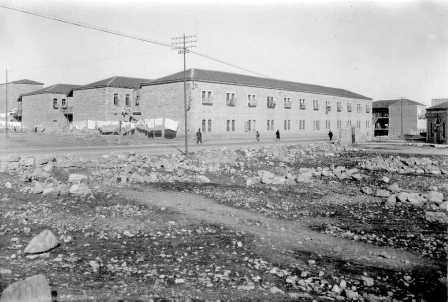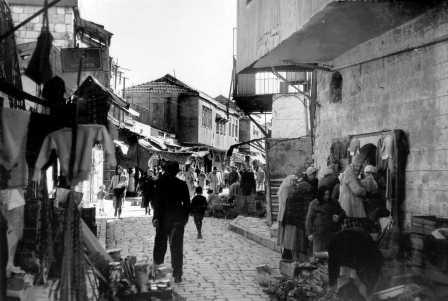Yehushua Ben - Aryeh's new book, "New Jewish Jerusalem during the British Mandate", tells the story of the spreading of the Jewish yishuv beyond the walls of the Old City during the period of the British Mandate, and follows the gradual birth of modern Jerusalem. The book, published in 2011, applies a geographical– historical approach, and uses a wide variety of resources: interviews with residents of Jerusalem at the time in question or their offspring, archival material, the Jerusalem census of 1939, and house signs, some of which exist till today.
The book is a study in social history that utilizes individual and detailed case studies in order to display a wider historical phenomenon. Meticulous study of the different families comprising the Jewish yishuv in those days, enables Ben - Aryeh to touch upon the real subject at the center of his book – the Jewish community of Jerusalem and its unique character, whose roots, according to Ben - Aryeh, were planted at this historical point in time. As a result of this varied research methodology, the reader is introduced to the human scenery of Jerusalem during the early decades of the 20th century. The combination of the maps and house signs gives the book the semblance of a guide to a virtual historical tour, and to the reader, the feeling of being a traveler, who is touring the streets of Jerusalem in a time long gone.


One of the most interesting examples in the book is Mea Shearim . The neighborhood that is now Haredi (ultra-Orthodox) in character, was then a mixed neighborhood with a colorful plethora of different people from different places of the world. Among the pages of the book the reader can meet, for example, the lawyer Kalman Friedenberg, who was secretary of the Hebrew Law Society, and the tinsmith Nahum Orbach, who were next-door neighbors in Mea Shearim. He can also follow the intricate path of Dina Monson's life story, the daughter of a lithographic factory owner, who went to Beirut to study the art of hat-making, later to return to Jerusalem and open one of the first hat stores in the city, thereby allowing the women of Jerusalem to enjoy a taste of European elegance in the Levant . If the reader continues to travel further along the pages of the book and the streets of the neighborhood, he might even chance upon Aryeh Live Gavrielowitz, a famed pharmacist who opened the first pharmacy outside the city walls, walking along with his friend, K. Kankashian. The latter was known for his many travels abroad, and will be sure to share with the reader a few historical anecdotes.
Most of the characters comprising this historical tale have been found by Ben - Aryeh in the pages of the Jerusalem census of 1939. The census was executed by the General Council of the Jews in Palestine (Havaad Heleumi), and its many registers are all housed in the Central Zionist Archives. All of the registers of the census have been digitized and are accessible to the visitors of the CZA looking for genealogical information, as well as to the academic community.